Are ‘Philistines’ During Abraham’s Time Evidence Against Bible Historicity?
A large number of archaeological discoveries related to the Philistines has attested to the veracity of the biblical description of them. Such corroboration has included the powerful status of Gath at the time of David; the fall of the city in the following century; inscribed names that relate, either directly or in form, to biblical names such as Goliath and Achish; twin-pillared Philistine temples that parallel the story of Samson; immigration from the Mediterranean isles.
Yet this subject of the Philistines is still frequently held up as evidence against the historicity of the Bible. Why?
Namely, because the Bible references them in the Land of Canaan during the patriarchal age—at least 500 years before they are supposed to have migrated.
In an interview with Prof. Israel Finkelstein, Matthew Adams, director of the W. F. Albright Institute of Archaeological Research, asked: “Does the Bible know anything about [the early history of the Philistines]?” Finkelstein replied with a relatively typical answer to this subject: “I don’t think so … the biblical material on the Philistines could not have been composed before the eighth century b.c.e., at the earliest.” He continued: “The Bible, I think, does not remember, really, the first phase of Philistine history. … [T]here are no Philistines in Canaan before the late 12th century b.c.e.” And as for the later biblical Philistine history of migration, that has been corroborated by archaeology? “[I]t’s coincidence that they’re roughly correct,” Finkelstein said. “[The biblical writers] didn’t really know where they came from.”
Is the description of “Philistines” prior to the 12th century—in fact, over half a millennium earlier—evidence of biblical fable? Diving below the surface of this question reveals some fascinating archaeological—and biblical—information.
Presenting the Peleset
First: Where does the confidence in a late-second-millennium arrival of the Philistines come from?
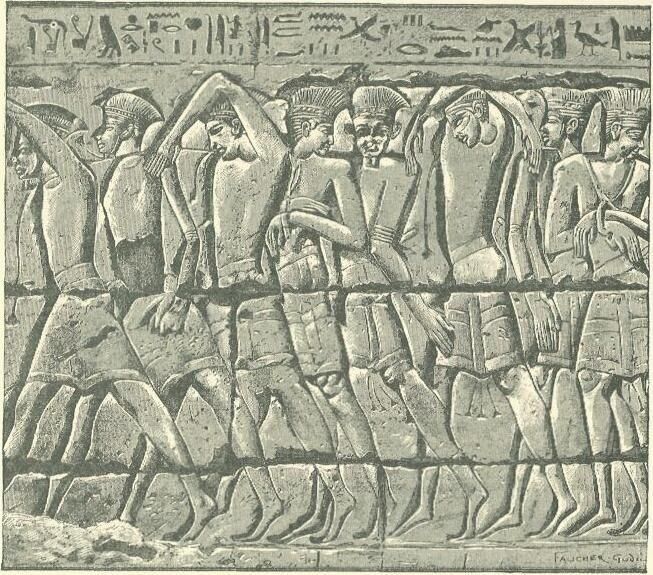
The earliest archaeological records of the Philistines are found in Egyptian inscriptions, particularly those of Ramesses iii. These records list the Peleset people, as part of a wider enigmatic Mediterranean group known as “Sea Peoples,” repeatedly attacking Egypt by sea and land around 1200 b.c.e. They appear to have been attempting to establish and expand land settlement along the southern Mediterranean coast; however, the Egyptians successfully beat them back, with Ramesses iii allowing them to settle along the southern Levantine coast.
A wall inscription of Ramesses iii at Medinat Habu attests to this conflagration, reading in part: “As for the foreign countries, they made a conspiracy in their isles … [T]heir confederation was the Peleset, Theker, Shekelesh, Denyen and Weshesh, lands united ….” The name “Peleset” is a good parallel to the Hebrew spelling for the Philistine polity in the Bible.
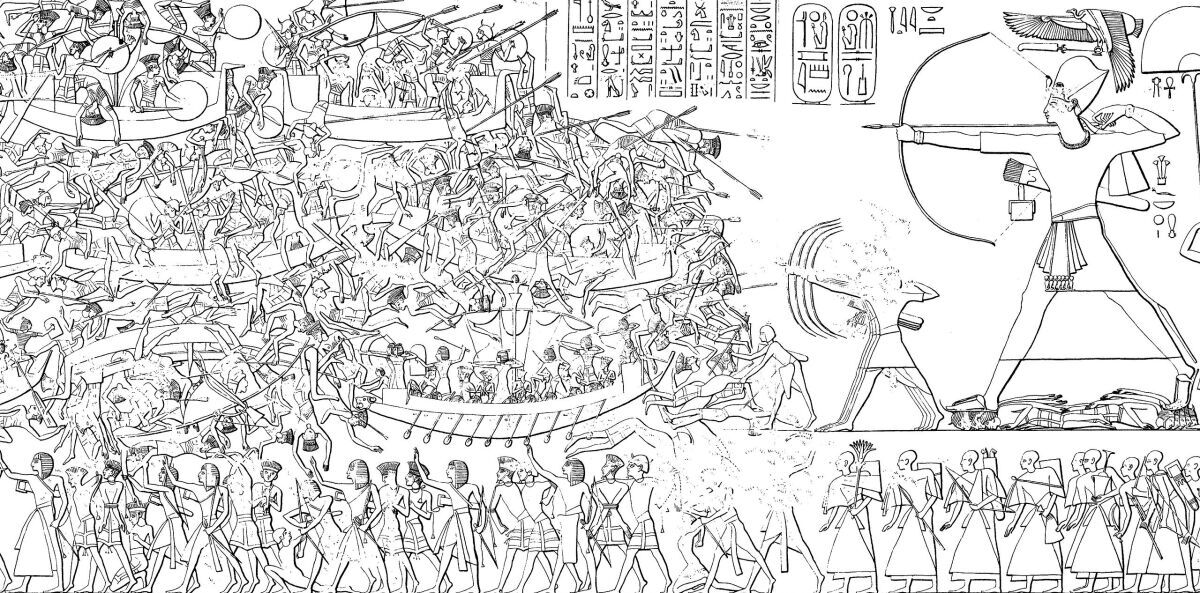
Two years ago, dna analysis of Philistine graves at Ashkelon established that the main body of Philistines indeed arrived in the land during a large migratory wave from the Greek isles (notably, Crete) starting sometime around the mid-13th century b.c.e. The biblical warrior Shamgar’s early encounter with this warlike people (Judges 3) fits with this early migration, with a buildup of trouble that would eventually hit critical mass in the 12th to 11th centuries as the Philistines became settled—fitting with the accounts of Samson, Saul and David.

But what of passages such as Genesis 21 and 26? What of the accounts of “Philistines” already in the Holy Land during the early second millennium b.c.e., and of their interactions with Abraham and Isaac during the patriarchal age?
Anachronism?
One common recourse of explanation is anachronism. An anachronism is a later, more familiar term used by a writer or editor to make an earlier subject more familiar to their readers. (For example, Julius Caesar conquering France—France was, of course, not the name of the territory at that time, but this anachronism conveys the meaning of the event more clearly to modern readers.) With this logic, in Genesis 21 and 26, the use of a later term, “Philistines,” was applied to earlier inhabitants of the same region. Anachronisms such as this can constitute piecemeal changes to original material made by later editors, or they can represent the time of composition for the entire work. (Professor Finkelstein, for his part, subscribes to the latter in this case.)
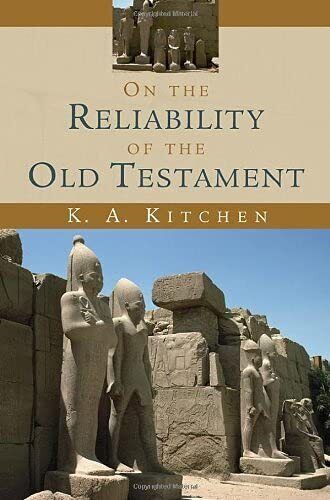
In his work On the Reliability of the Old Testament, Egyptologist Dr. Kenneth Kitchen writes: “The charge of ‘anachronism’ is also frequently leveled at the appellation of ‘Philistine’ found in Genesis … commentators find difficulty with the term ‘Philistine’ in Genesis, seeing that this name for a people group occurs only from Year 8 of Ramesses iii (ca. 1180 or 1177), among his Sea People opponents … it is fatally easy to scream ‘anachronism’ at the term in the patriarchal narratives.”
So what is the best recourse? Let’s dig deeper into what the Bible actually says.
Hidden Clues
The various terms “Philistine,” “Philistines” and “Philistia” are used just over 300 times throughout the Hebrew Bible. And there’s something notable about the use of those terms when it comes to the earliest-known Bible translation: the Septuagint.
Translations are a real gem; the transfer of writings from one language to another helps shed precious knowledge on how certain concepts were understood at certain points in history. The Septuagint constitutes a translation of the Hebrew Scriptures into the Greek language during the third century b.c.e. at the behest of Ptolemy ii Philadelphus, ruler of Egypt. It represents some of the earliest-known, complete preserved Scriptures (with at least the Septuagint Pentateuch, or Torah—the first five books of the Bible—clearly predating even the Dead Sea Scrolls). And in the Septuagint record, we find something rather remarkable.
There are two entirely different names used to describe the Philistines. One is Φυλιστιειμ (Philistiim); the other, ἀλλόφυλοι (allophiloi).
Interestingly, use of the term Philistiim is found exclusively in the books from Genesis through Joshua. From Judges through the rest of the Hebrew Bible, the term allophiloi is used—a word meaning foreigners or strangers!
Here, then, we already see understanding of a clear distinction between two groups of “Philistine” people. One from the start of the Bible through to Joshua—and then a dramatic change beginning with the Judges period, fitting with the very time in which archaeology reveals a new Mediterranean migration into the land.

This two-part distinction, as highlighted by the Septuagint translators, continued to be stressed in early Jewish writings throughout the following centuries. Mark Brett writes in his book Ethnicity in the Bible: “Rabbinic sources insist that the Philistines of Judges and Samuel were different people altogether from the Philistines of Genesis” (emphasis added throughout).
One such early rabbinic source, Midrash Tehilim (a text circulating since at least the 11th century c.e.), highlights the entirely different “Philistine” population at the time of the judges and kings. The following is from its commentary on Psalm 60: “Pay attention … upon entering the land of the [later] Philistines, they [the Israelites] said to them … You are not keeping the precepts of the covenant Abraham made with Abimelech [the early, Philistine king of Genesis] … you are not Philistines. And the Philistines departed them” (1:2).
This understanding, revealed by the Septuagint translators and affirmed by later rabbinic sources, came thousands of years before certain scholars began “crying foul” that the early Philistines could not have been the same people as the later. (Who, exactly, was behind the times?)
Biblical Differences
The separation of these peoples was therefore clearly spelled out more than 2,000 years ago, by the use of entirely different Greek titles. But what spurred this distinction? We get a clear sense of this separation of the early “Philistines” from the original Hebrew Scriptures themselves.
First and foremost, the “later” biblical Philistines are referenced repeatedly as pentapolis “lords,” by the word seranim. This clearly Indo-European originated word (etymologically related to the word tyrannos, from which we get the word tyrant) fits well with the later migration of Philistines from the Greek isles. The early Philistine rulers in Genesis, on the other hand, are never called by this name—instead named as kings, in the very same Hebrew-Canaanite term used for all surrounding Canaanite rulers. Furthermore, following the book of Genesis, there is no further mention of an overall “king of the Philistines”—the latter Philistine rulers are named only as individual rulers of city-states.

It’s the same story with names. The later Philistines carry Indo-European derived names—i.e. Goliath, Achish. The early Philistines? Local Canaanite names—i.e. Abimelech, Phicol.
We also see a clear difference in names for the territories and cities ruled. The later Philistine lords ruled over the five-city pentapolis: Gath, Ekron, Gaza, Ashkelon and Ashdod. Yet the early Philistines ruled over differently named entities entirely, such as the enigmatic territories of Gerar, Avva and Geshur.
If late writers were fabricating a Philistine history based on that of their own day, why these comprehensive differences? Why the use of such little-known, archaic city names?
The differences continue.
There is a general, recurring theme of respect and friendship between the leadership of the Genesis Philistines and the Israelite patriarchs (i.e. Genesis 21 and 26; albeit colored by isolated incidents among servants, which were quickly patched over in treaties). But the opposite is true with the later Philistines; there was a primary theme of animosity between these two peoples, in what the sixth-century prophet Ezekiel terms the “old hatred” (Ezekiel 25:15). An original “hatred” cannot be said of initial interactions with the “early” Philistines—but it can, right from the beginning, be said of interactions with the “later” Philistines.
There’s also the tender subject of circumcision (warning: graphic content!). Later biblical references to the Philistines often refer to them pejoratively as “uncircumcised”—the uncircumcised Philistine. Yet this is never the case for the early Philistines. In fact, this phrase is not apparently used pejoratively for any other people, though the surrounding nations were likewise uncircumcised (Jeremiah 9:26). Why this particular association with the later Philistines?
Records from at least the first millennium b.c.e. among the Greek isles give us good insight. In these cultures, male nudity was not frowned upon. In fact, a male was not considered truly “naked” unless his foreskin was withdrawn—something considered a great dishonor. As such, individuals (particularly in sporting events) are often shown wearing a fibula or string to keep the foreskin elongated, if in public. In such cultures, “un”-circumcision was virtually celebrated and emphasized visibly. (Additionally, archaeological discoveries from Philistine sites in Israel have revealed various phallic objects and ornaments—whether they were actively “worn” or not remains unknown.)
This, then, would provide a ready explanation for the title uncircumcised Philistine, as used by the likes of King David. But again, the title only emerges from the Judges period onwards (beginning in Judges 14:3)—fitting with the time of immigration of these later Philistines to Canaan from the Greek isles.
What the Genes Say
As mentioned above, genetic studies on skeletons discovered in “Philistine” territory (namely Ashkelon), of various periods, reveal a Mediterranean influx beginning to occur around the 13th century b.c.e. This is therefore quite reflective of the biblical description in the book of Judges—a limited mention of Philistines in the early part of the book (Judges 3), later increasing (Judges 10) and then reaching critical mass, spiraling out of control from chapter 13 on into 1 Samuel.
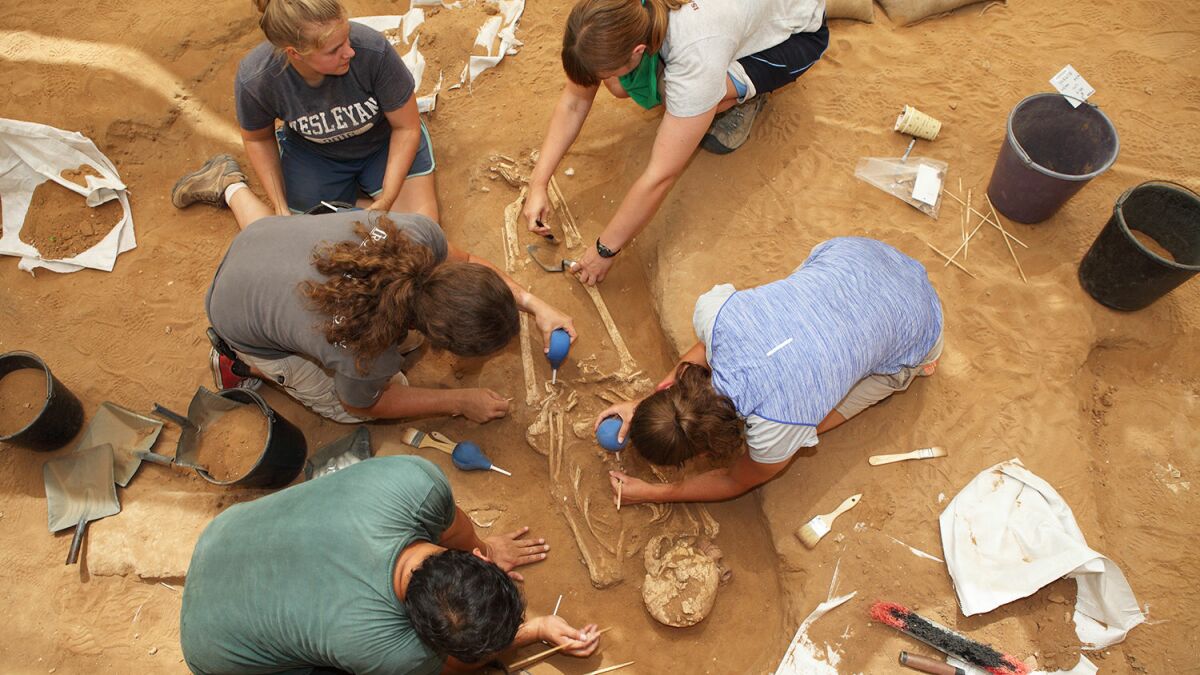
But that genetic picture is only half of the story. Because individuals within the “land of the Philistines” during earlier, pre-13th-century periods have been analyzed—and these “Philistines” share similarities with the surrounding early Canaanite population. This fits perfectly with the above-mentioned, more Canaanite-oriented early “Philistines” in the book of Genesis.
So what led to this population shift? Does the Bible have anything to suggest it?
Does the Bible Actually Describe a Philistine Displacement?
Some fascinating verses reveal that the original inhabitants of the land of the Philistines were displaced by later Mediterranean immigrants!
Deuteronomy 2:20-23 comprise a parenthetical thought, describing various regions in Canaan. Various commentaries highlight the fact that it was likely added by later editors to provide clarity for a clearly enigmatic territory being described. Of the coastal territory typically associated with the Philistines (although not naming them directly), the parenthetical passage reads: “(That was also regarded as a land … [of the following people, who] formerly dwelt there … the Avim, who dwelt in villages as far as Gaza—the Caphtorim, who came from Caphtor, destroyed them and dwelt in their place.)” (New King James Version).
Who were these Caphtorim, who supplanted the Avvim/Avvites? Amos 9:7 reads: “Have not I brought up Israel out of the land of Egypt, And the Philistines from Caphtor …?” Jeremiah 47:4 reads: “…For the Lord will spoil the Philistines, The remnant of the isle of Caphtor.”
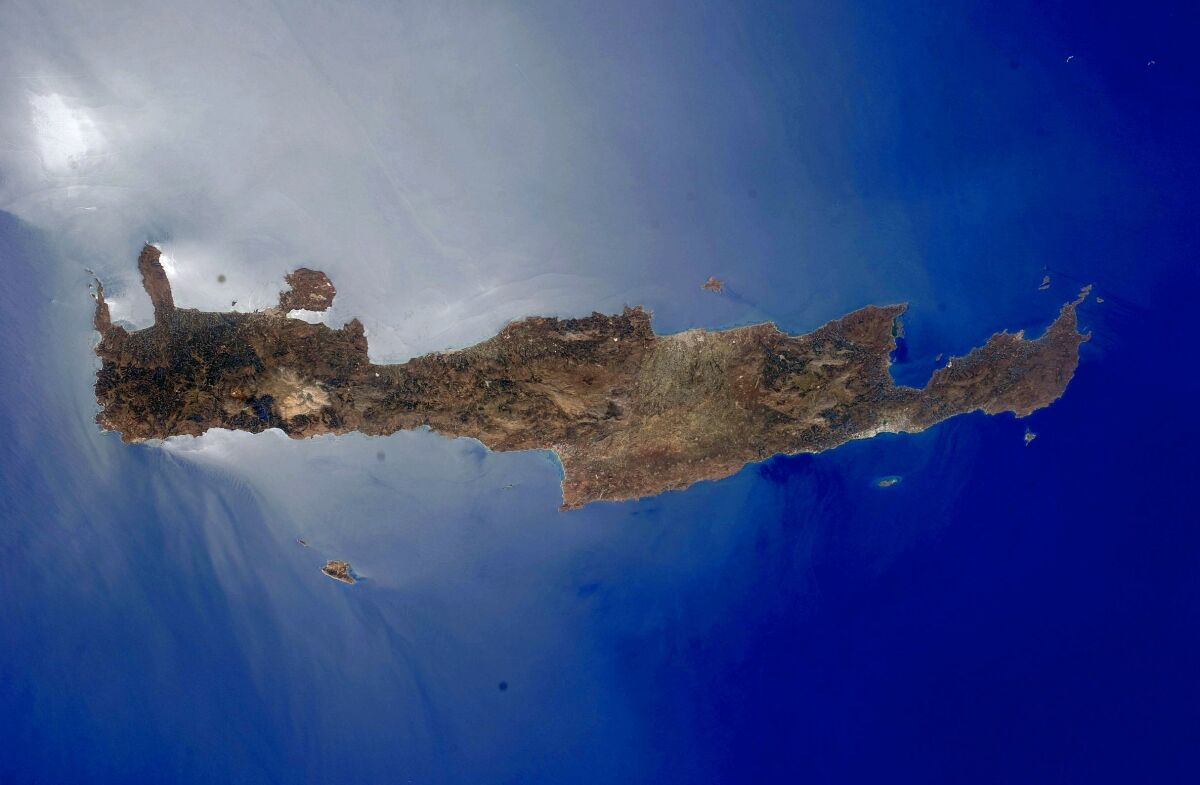
The island Caphtor is identified primarily in ancient texts with the island of Crete. (Read more detail about this subject here.) And the Bible identifies these later Philistines, the “foreigner” allophiloi of the Septuagint (those inhabiting the land during the time of the prophets Amos and Jeremiah), as being specifically the Mediterranean Caphtorim!
The book of Deuteronomy states that the Caphtorim later came along and displaced the original people, the Avvim, or Avvites, from this land of the Philistines. This very verse was cited in the above-quoted rabbinic work Midrash Tehilim, which continues to address the separate identity of these later Philistines as follows: “[Y]ou are not [the original] Philistines. And the Philistines departed them. Indeed, it says in Deuteronomy 2:23 that the oppressors who inhabit the territory to Gaza are Caphtorim.”
So Who Were These Early Philistines?
We have already seen certain scriptures pointing to a separate Canaanite identity of these early Philistines. Additional scriptures attest to the same theme as Deuteronomy 2—originally Canaanite “Philistine” land, that was supplanted by later, post-Exodus, Caphtorite Philistines.
Joshua 13:2-3, likewise in another parenthetical thought, describe “all the regions of the Philistines, and all those of the Geshurites (from the Shihor, which is east of Egypt, northward to the boundary of Ekron, it is counted as Canaanite …)” (English Standard Version; the passage also mentions the presence of Avvites). The New Living Translation puts the parenthetical thought as follows: “the larger territory of the Canaanites, extending from the stream of Shihor on the border of Egypt, northward to the boundary of Ekron. It includes the territory of the five Philistine rulers of Gaza, Ashdod, Ashkelon, Gath, and Ekron … all the land of the Canaanites” (verses 3-4).
Numbers 13:29 points to the same thing—this “pre-Caphtorite” territory as a Canaanite land. Here, the 12 Israelite spies are describing the different peoples inhabiting the primary divisions of the Promised Land. “Amalek dwelleth in the land of the South; and the Hittite, and the Jebusite, and the Amorite, dwell in the mountains; and the Canaanite dwelleth by the sea, and along by the side of the Jordan.”
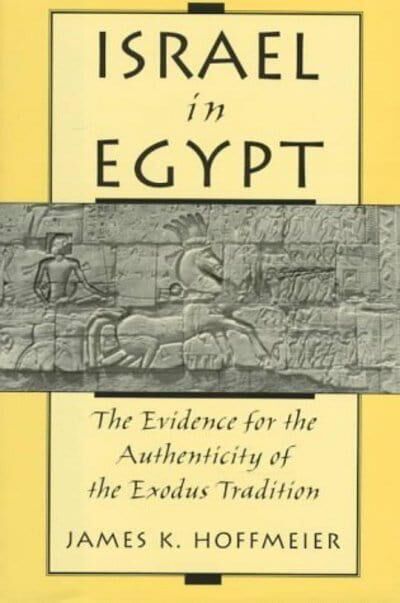
No mention is made of a distinct group of “Philistines.” The occupants of this Philistine territory are named as Canaanites. Of this scripture, Prof. James Hoffmeier writes that “the Israelites understood that prior to the arrival of the Philistines in the early 12 century b.c.e., the area had been occupied by Canaanites” (Israel in Egypt).
This same “understanding” is found in numerous other parallel passages.
Scriptures such as Joshua 13:2-3 reveal that the Israelites were meant to take possession of this “Philistine” land. Yet in God’s promise to Abraham of his descendants occupying this land, no mention is made of “Philistines”—rather, a laundry list of Canaanites. The same is true of Exodus 23, 33 and 34—chapters that list the people God would aid Israel in driving out; they contain lists primarily composed of Canaanites, but nowhere mentioning Philistines!
The inference, then, is clear: These early Genesis “Philistines,” or people who originally occupied this “Philistine” land, were Canaanite in origin (constituting, for example, the Avvites, Gerarites and Geshurites)—people who came to be overtaken by Caphtorim, the later Philistines. This original Canaanite occupation of traditionally “Philistine” land is affirmed as early as Genesis 10 (the “Table of Nations” chapter). “[A]nd afterward were the families of the Canaanite spread abroad. And the border of the Canaanite was from Zidon, as thou goest toward Gerar [the city of early ‘Philistine’ King Abimelech], unto Gaza …” (verses 18-19).
And all of this is only the tip of the iceberg for the unique way in which the Bible describes the Philistines.
The ‘The’
Again, “Philistines” is found in various forms some 300 times in the Bible. In the English King James Version, the term “the Philistines” is used 216 times.
But strictly speaking, that translation is not accurate. Because remarkably, the Hebrew text only uses the definite article, for “the Philistines,” 10 out of 289 times.
Here are some examples of the literal Hebrew translation: “King of Philistines,” “and Philistines envied him,” “into the hands of Philistines,” “to deliver you from Philistines,” “daughters of Philistines,” “more blameless than Philistines,” “the corn of Philistines,” “and lords of Philistines came up,” “but Philistines took him,” “Let me die with Philistines,” “and Philistines took the ark,” “all the cities of Philistines,” “they were afraid of Philistines,” “Then Saul went up from following Philistines: and Philistines went to their own place.”
These are all phrases that would typically have the definite article the, not just in English but also in Hebrew, when referring to other entities. But when it comes to the Philistines, the definite article is virtually never used.
There’s more. This entity is almost always referred to in the plural (“Philistines,” “land of Philistines”). This Hebrew plural terminology is again largely unique to this group. Why?
The famous Irish archaeologist R.A.S. Macalister wrote the following in his 1913 work The Philistines: Their History and Civilization: “There is a peculiarity in the designation of the Philistines in Hebrew which has often been noticed, and which must have a certain significance ….” He continued:
In referring to the Philistines, the plural of the ethnic name is always used, and as a rule the definite article is omitted. A good example is afforded by the name of the Philistine territory above mentioned, ‘ereṣ Pelištīm, literally “the land of Philistines“: contrast such an expression as ‘ereṣ hak-Kena’anī, literally “the land of the Canaanite”. A few other names, such as that of the Rephaim, are similarly constructed ….
[I]t may be said generally that the same usage seems to be followed when there is question of a people not conforming to the model of Semitic (or perhaps we should rather say Aramaean) tribal organization. The Canaanites, Amorites, Jebusites and the rest are so closely bound together by the theory of blood-kinship which even yet prevails in the Arabian deserts, that each may logically be spoken of as an individual human unit. No such polity was recognized among the pre-Semitic Rephaim, or the intruding Philistines so that they had to be referred to as an aggregate of human units.
The Philistines were an “aggregate” people, a loose title for people of various background. These details, again, only point to what the Jewish translators of the Septuagint penned some 2,200 years ago—particularly, with regard to the lack of specificity in the uncapitalized term allophiloi, meaning “foreigners/others.”
But when it comes to the use of the definite article, there is a notable exception.
Goliath, the Philistine

The story of the battle between David and Goliath is likewise extremely interesting—and not just for the storyline. Because here, repeatedly and continuously in the singular sense, Goliath is referred to as “the Philistine” (again, in the inverse of the typical English translations). Take, for example, 1 Samuel 17:8. The King James Version reads: “am not I a Philistine?” But the Hebrew text follows, “am I not the Philistine?” Repeated references to Goliath as the Philistine continue throughout the following verses.
Why is Goliath referred to with the definite article—yet not the surrounding Philistine body?
As we have seen, there are clearly two primary distinctions of “Philistines” highlighted by the Bible: The “early,” Canaanitish “Philistines,” and then the “later,” Caphtorite “Philistines.” Both took on the name Philistines in the Hebrew text yet were different in virtually every respect—a difference most noticeably highlighted by the two names of the Septuagint text, in labeling the later Philistines allophiloi. But note that all early Septuagint references to the inhabitants of this area have the proper name Φυλιστιειμ—Philistiim. The inference is apparently that these early, Canaanitish occupants were the original, true Philistines (recall the words of Midrash Tehilim regarding the later Caphtorite entity—“you are not Philistines.”)
Could Goliath, in being labeled the Philistine, have been referring to himself as belonging to these original Philistine Canaanite inhabitants, yet living among the later Caphtorites? There is some additional support for this.
First and foremost, Goliath was known among the Philistines for his size. Apparently this must not have been a propensity for the Philistines of the time, for Goliath to have stood out so dramatically in this fashion. (For example, in the lengthy story of Samson, there is no special mention of any “large” Philistines—if anything, the opposite.)

Back to the passage in Deuteronomy 2, about the Caphtorite takeover of this early Philistine land. An important detail was deliberately left out, above: This wider passage has a focus on giants.
Deuteronomy 2 describes various Canaanite territories and the giants relating to them. The parenthetical section, beginning in verse 20, starts this way: “(That was also regarded as a land of giants; giants formerly dwelt there. But the Ammonites call them Zamzummim, a people as great and numerous and tall as the Anakim. But the Lord destroyed them before them, and they dispossessed them and dwelt in their place …. They dispossessed them and dwelt in their place, even to this day. And the Avim, who dwelt in villages as far as Gaza—the Caphtorim, who came from Caphtor, destroyed them and dwelt in their place.)” (verses 20-23, nkjv.)
The Torah repeatedly mentions giants living in Canaanite lands (indeed, so do Egyptian inscriptions). And here we read of such in the wider context of Philistine land and its original inhabitants. Could Goliath, therefore, have been a Canaanite Philistine—of the original stock—allowed by the Caphtorites to remain in the land and serve in a mercenary capacity?

In addition to this, Goliath was not an isolated individual with “gigantism.” His own family, likewise, were giants!
2 Samuel 21 describes the slaying of four giants fielded by the Philistines at the time of David: Ishbibenob (verses 15-17); Saph (verse 18); Lahmi, brother of Goliath (verse 19; 1 Chronicles 20:5); and a fourth, unnamed individual (2 Samuel 21:20-21). The passage concludes: “These four were born to the giant in Gath” (verse 22). Repeat statements are made in both parallel chapters that these were “children of the giant.”
This word “giant” used here is the Hebrew word Rephaim. It is translated often as “giants.” But as a proper noun, it refers to a Canaanite class of giants—the Rephaim or Rephaites (similar to another such family, the Anakim—”sons of Anak,” the giant). And this word, Rephaim, is the same particular word used for the giants discussed in Deuteronomy 2! From the Jewish Publication Society translation of Deuteronomy 2: “That also is accounted a land of Rephaim: Rephaim dwelt therein beforetime … tall, as the Anakim …” (verses 20-21). 2 Samuel 21 and 1 Chronicles 20 account that these mighty individuals, related to Goliath and fielded by the Philistines, were “sons of the Rapha,” singular. (Note also a circa 1200 b.c.e. Canaanite tablet from the northern Syrian city of Ugarit that mentions, in the same etymological form, a deified great king Rapiu.)
One of the key locations highlighted in the Bible as being occupied by the Canaanite Rephaim is a place called the “Valley of Rephaim,” on the west side of Jerusalem. And who do we find occupying this territory during the time of King David? Philistines (Joshua 18:16; 1 Samuel 5:18).

These giants, including Goliath, were known as Rephaim. Yet they were likewise referred to as “Philistines.” (Note also the connection Macalister made between the Philistines and Rephaim.) This again points to the title Philistines as a more general and inclusive grouping of people applied to a territory, not simply an ethnicity. And therein lies the rub.
The Answer Is All Around
The biblical use of the title “Philistines” thus represents a rather inclusive term. It is continually used in the plural. It is stubbornly repeated without the use of the definite article. It is applied to Canaanites; to “Greeks;” to Avvites, Geshurites and Gerarites; to Gittites, Ashkelonites, Ekronites, Ashdodites and Gazans; to Rephaim, to Caphtorim, to Casluhim (Genesis 10:14); potentially also Cherethites and Pelethites (2 Samuel 15:18; Zephaniah 2:5). The name Philistine is continually applied to completely different inhabitants of a specific tract of land, rather than a specific group or tribe of people. There is no original “father” of this group, so-named in such manner.
And we see this use, in very same manner, to this day—with the term “Palestinians” (Hebrew Falastinim, Arabic Filastiniun).
In 135 c.e. the Roman emperor, following the subduing of three major Jewish rebellions in the prior half-century, elected to rename the territory of Judea as Palestine, or Syria Palaestina, in a bid to decouple the territory from the Jewish people. This name, derived from the biblical Philistia, was expanded to apply to the entire region. This was influenced by the Greek name for the territory, as the first-century Jewish historian Josephus attested: “Now all the children of Mesraim, being eight in number, possessed the country from Gaza to Egypt, though it retained the name of one only, the Philistim; for the Greeks call part of that country Palestine” (Antiquities, 1.6.2).
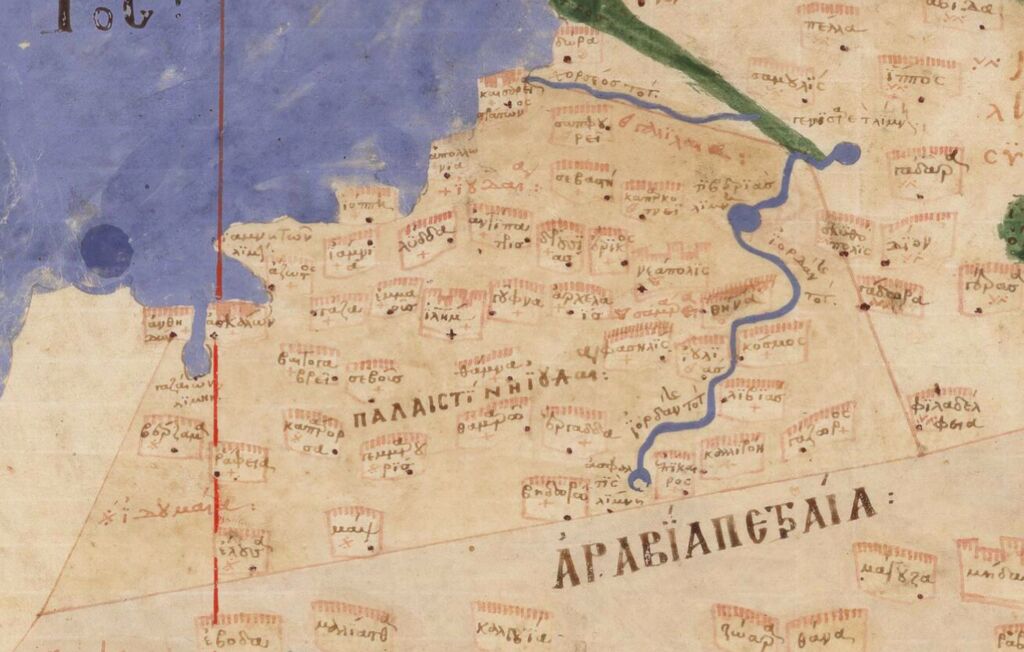
This name Palestine was formally used up until the 1948 declaration of the State of Israel (and the ensuing War of Independence). Up until this point, Jews themselves living in the land—those who had been living there throughout the centuries prior—could thus be equally named “Palestinians.”
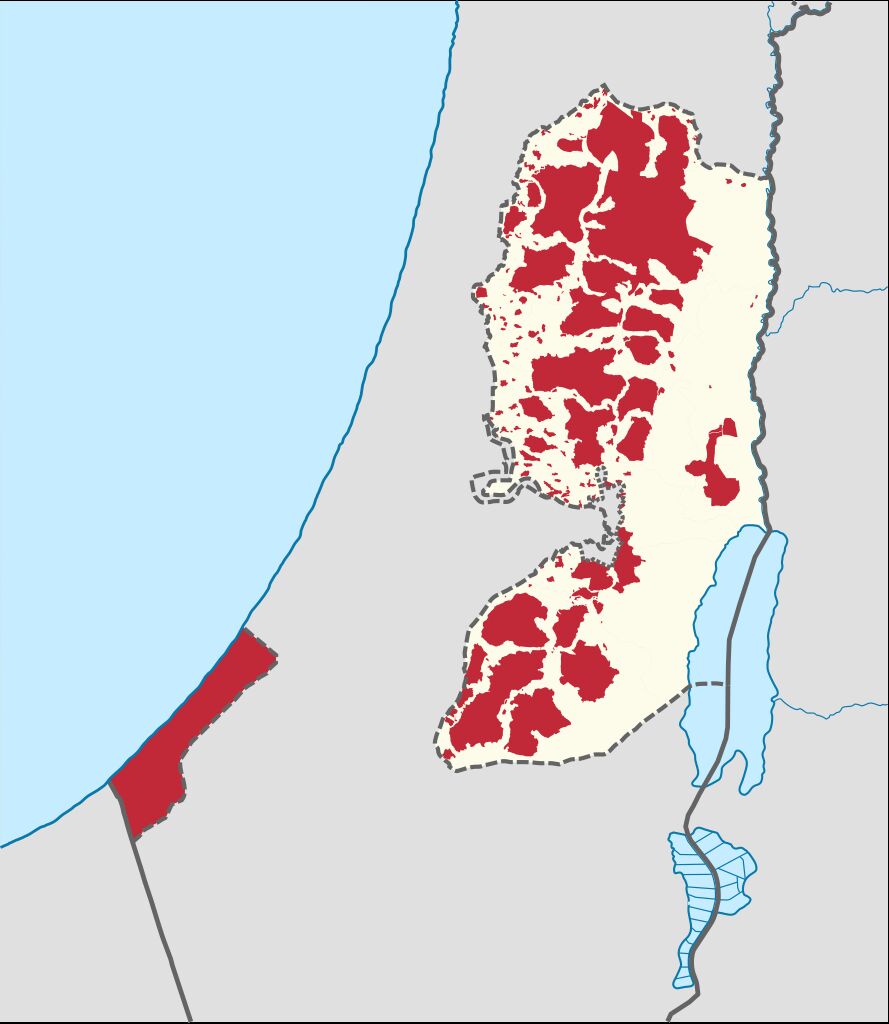
And while the wider Arab population in Israel is today referred to as Palestinian, largely occupying the West Bank and the Gaza Strip, the Gaza Strip remains the only fully “disengaged” region—the very same “strip” occupied by the Philistines anciently.
The modern “Philistines”—Palestinians—are very different from those of the Bible. They are certainly not the “Greek” Philistine population, but neither do they necessarily represent the “Canaanite” Philistines. (Instead, they are the product of “Arabization” during the period of the expansive Arab Empires; in the words of Duke University historian of religion Eric Meyers, they are “descendants of Abraham and Ishmael, so to speak.”)
And even today, the terminology is similar to the biblical. The territory is not officially the singular Palestine. Debate rages as to what Palestine really is. Yet the people are generically referred to, continually, in the plural form—Palestinians.
And Then There Was Palistin
There remain many unknowns regarding the ancient Peleset and archaeological identity of the Philistines—“early” or “late.” And in some ways, archaeological discoveries over the past several decades have been bringing more questions than answers.
Of particular note is a recently discovered, enigmatic kingdom of Palistin. Luwian (Anatolian/Hittite-related) inscriptions have been found in northwest Syria, attesting to a northern Levantine entity known as Falistina or Palistin, at least as early as the 11th century b.c.e. This “kingdom” was apparently a Syro-Hittite state somehow deriving or emerging from the early Amurru (Amorite) and Hittite kingdoms. As Ann Killebrew notes in her book The Philistines and Other Sea Peoples in Text and Archaeology: “Most surprising is the recent epigraphic discovery that the ‘Amuq Plain was referred to as Palastin during the early Iron Age.”
This has ignited a scholarly debate as to whether these were a related or separate people to the Peleset Philistines from the Mediterranean islands. From Hittitologist Trevor Bryce’s book Ancient Syria: A Three Thousand Year History:
[W]as this [northern] “Palistinean king” called Taita (Hawkins now thinks there may have been at least two kings so called) connected with the Philistines? If so, how do we explain his presence so far to the north of the region called Philistia in southern Palestine? Does Taita’s presence in northwestern Syria indicated a Philistine population in this region at that time? And why did a Philistine king use the Luwian hieroglyphic script for his and his family’s public monuments? Further excavations may one day provide at least some of the answers to these questions.
Debate rages as to the Aegean-style pottery, or lack thereof, found in the chief city of “Palistin,” Tell Tayinat—and why, if these are a Mediterranean people, their names are of Luwian, Hittite/Amorite style. (It has been argued that there is nothing, besides the name, to connect these people to the Mediterranean Peleset Philistines. Does this sound familiar?)
From a Luwian Studies article titled “The Philistines in Canaan and Palestine”:
The name Palestine already appears in Luwian stone inscriptions in the North Syrian city of Aleppo during the 11th century b.c.e. It is therefore virtually impossible to derive the topographic term from the arrival of the Peleset. It is possible that researchers will disentangle the terms Palestine, Philistine and Peleset in the near future.
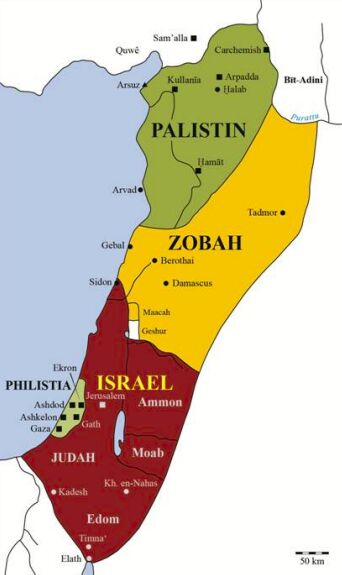
The discoveries that have been made thus far are limited to the northern Levant—an entity somewhere in western Syria. But the Hittite/Amorite connection for this enigmatic polity is particularly interesting, in light of a peculiar biblical passage regarding Canaanites (specifically in and around Jerusalem). Ezekiel 16 is a poetic refrain of God’s love for Jerusalem. It discusses the early population of this region: “Thus saith the Lord God unto Jerusalem: Thine origin and thy nativity is of the land of the Canaanite; the Amorite was thy father, and thy mother was a Hittite” (verse 3). Verse 45 repeats: “your mother was a Hittite, and your father an Amorite.”
Could it be, then, that rather than the Syro-Hittite state “Palistin” receiving its name from the Sea Peoples, the opposite was true—the Sea Peoples took on an already established Levantine name when settling in the Holy Land? After all, there is no conclusive evidence of this Peleset, “Philistia” name among the Mediterranean isles. Indeed, the Bible points out their origin name as something entirely different: Caphtorim. And that the Caphtorim weren’t the original “Philistines”—they only became so, when they entered the land. Again, it is the Levant that stubbornly has retained the name throughout history, not an island or coastal region anywhere else in the Mediterranean.
Where Does That Leave Us?
Only a handful of inscriptions have been found mentioning the Levantine Palastin or Falistina entity. Also, comparatively few discoveries have been found mentioning the Peleset Philistine “Sea Peoples” that settled in the Holy Land. This entire early period of displacement, following what is known as the “Bronze Age Collapse” (across the Mediterranean and wider Middle East), represents one of the greatest periods of civilizational upheaval in human history—yet even with modern advances in technology and archaeological practice, we know very little about it and not least what caused it.
The last several decades of archaeology have shown that the appearance of “Philistines” in Canaan is not a simple, open-and-shut case of a 12th-century b.c.e. Peleset invasion of Egypt, defeat and rehoming along the coast of Canaan. (As we have seen from the dna analysis, this migration was occurring a century prior.) As Dan’el Kahn wrote in “The Campaign of Ramesses III Against Philistia”:
From the many suggestions, mostly basing themselves on the same archaeological evidence (with additional data surfacing over the years, but not changing the initial theories!), it becomes clear that archaeological tools [have] not solve[d] the question of the exact date of the settling of the Philistines in Canaan.
There is, then, no compelling archaeological or textual evidence of settling the Philistines en-masse in Canaan as the result of Ramesses iii’s eighth year campaign. Thus, the chronological anchor date for the settlement of the Philistines in the Southern Levant in Ramesses iii’s eighth regnal year cannot be unquestioningly accepted. … There is no evidence of Ramesses iii settling Philistines in Southern Canaan after their defeat in battle.
So in relation to the historicity of the earliest “Philistines” of the biblical account, where does that leave us?
The Bible reveals that the original “Philistine” inhabitants were of a Levantine or Canaanite nature. They were later supplanted by migratory waves of “foreigners” from the Greek isles—specifically from Crete—during the “Judges” period. They hit “critical mass” around the end of that period and the start of the Israelite monarchy, causing no end of problems for the Israelites and surrounding nations (not least Egypt). And their influence rapidly deteriorated during the first part of the monarchical period.
This has all been confirmed by archaeology. Questions, of course, remain. But as Kenneth Mathews wrote in The New American Commentary: “To pronounce the Philistine appearance in Genesis as unhistorical is not required by the facts and exposes the historian’s priority of the Egyptian evidence and a cavalier dismissal of the biblical witness.”
In the words of certain scholars, are Philistines in the book of Genesis “undoubtedly a mistake”? Does the Bible truly “know nothing” about the “Philistines” of Abraham’s time?